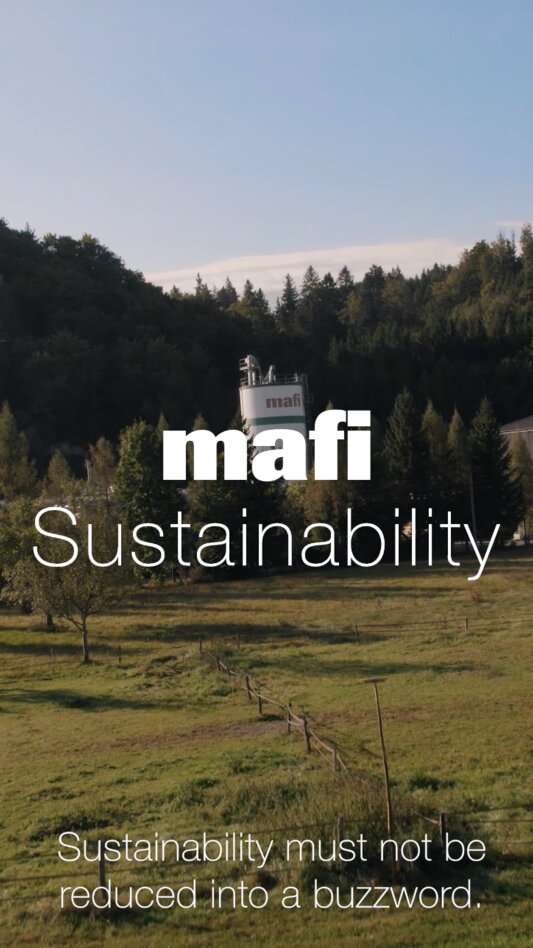

Living Sustainability
mafi natural wood floors actively remove 8kg of CO2 per m2* from the environment
We achieve this value through the extremely long service life of our products, the reduction of ingredients to the bare minimum and at the same time the most natural, as well as responsible production integrated in the region.
The result is a wooden floor for generations that improves the environment instead of polluting it.
*Source: Living Product Challenge

Is a wooden Floor automatically sustainable?
Definitely no.
Whether a wooden floor can really be described as sustainable depends on several factors.
First of all, there is always the resource wood and where and, above all, how it is sourced. Other very important components are the type of finish, i.e. the surface treatment, and which ingredients are used in the parquet.
Finally, the disposal and recyclability of the product must also be considered.

The Surface
The surface largely determines the sustainability of a wooden floor. Petroleum-based varnish, UV oil or other sealants often turn the natural material wood into hazardous waste.
Decades ago, we therefore opted for the most natural variant of wood protection: natural linseed oil, which dries in the air without chemical accelerators and can therefore penetrate deep into the wood.

The Ingredients
Problematic ingredients are often found in wood preservatives or in the glue that holds multi-layer parquet together. These substances can have a negative impact on the indoor climate and are also harmful to the environment.
Our wood floor oil contains no volatile organic compounds (VOCs) and our white glue is 100% free of formaldehyde. In general, our planks consist of wood, white glue and wood floor oil - and nothing else.
The Material
Not all wood is the same. The use of tropical wood should therefore be avoided, especially in Central Europe. The transportation routes are long and the source of the material is difficult to verify. But even within Europe, attention should be paid to sustainable forestry. For every tree felled, at least one new tree is planted.
We work with small forestry companies that are often still run as family businesses and with whom we have a long-standing partnership. In this way, we ensure direct communication and a transparent supply chain.




The Repair
In order for a mafi floor to have the longest possible service life, its ability to be repaired is crucial.
Wooden floors sealed with lacquer or UV oil must always be sanded down over the entire surface, whereas mafi floors can be repaired selectively and extremely quickly at the affected area. This increases the service life of our products enormously and therefore also the CO2 binding in the wood.

The Disposal
Depending on the ingredients and surface treatment, parquet is often hazardous waste or cannot be disposed of as wood.
mafi natural wood floors are different - we only use natural and compostable components. This means that our planks can be returned to the natural cycle after many years of use.
How do I recognize Greenwashing?
Quite frankly - there is hardly a wood flooring manufacturer that doesn't talk about sustainability. The differences and possibly greenwashing only become apparent on closer, critical examination. The following aspects can be clues for recognizing greenwashing:
- Transparency: how open is communication, what data is made available and are the production facilities open for visits.
- Components: what components does the product consist of, are they natural substances and what impact do they have on the environment?
- Product vs. range: There are many certifications and what exactly has been certified needs to be scrutinized. Often only a single flagship product is certified, but this cannot be applied to the entire range.
- Samples: always ask for samples and compare the structure, surface, smell and feel. Trust your instincts when doing so.
- Remain critical: is the reasoning logical, does the company philosophy match your values and can quality be produced at the stated prices?

Certificates
We rely on a broad base of internationally recognized and independently auditing certification bodies.
What contribution do mafi natural wood floors make to LEED certifications, what ecological footprint do our products have and which certifications are decisive for which areas?
Answers and comparisons can be found here: